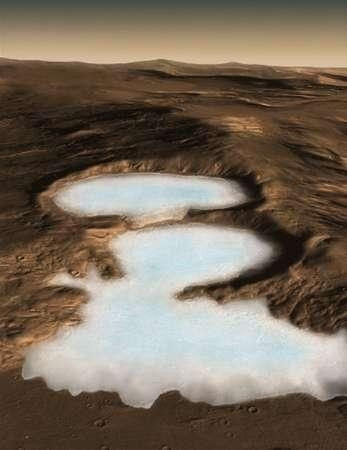NASA Captures Image Of Brain-like Area On Mars

An image was captured by NASA of a circular area in Mars, which is about 2 kilometers in width. NASA described it as a "circular island." while some have noted it looks a lot like a human brain or a deformed waffle.
The area could be proof of volcanoes in the Red Planet, reports the Daily Mail. There are many features in the area that continue to surprise and puzzle NASA experts.
According to NASA, the area is surrounded by a sea of smooth-looking lava. The region in which the brain-like shape was seen is called Athabasca Valles, and it is said to have some of the youngest lava flows on Mars. Athabasca is an outflow channel on Mars, which cuts into the surface of the Red Planet by the process of catastrophic flooding, and it is said to be of Late Amazonian Age. Before alien theorists could grab the opportunity to say that the photo is an evidence of extra-terrestrial features on Mars, NASA scientists have provided a more reasonable explanation for it, reported CNET.
The experts explained that because of the lava flows, volcanism could have played a huge role in creating the brain-like feature. They continued the lava could have forced itself underneath the mound and then pushed it up from beneath. They added it looked like there is material missing from the mound, and their guess is this could have been a significant amount of ice that was pushed away because of the heat of the lava.
A close inspection of the image, captured with the help of the HiRISE cameras aboard the Orbiter, NASA experts found the flood features were draped by the flow of lava. The HiRISE camera is on board NASA's Mars Reconnaissance Orbiter and is one of the six instruments on the Orbiter. It has a 19.7-inch aperture reflecting telescope, which is the largest that has ever been used in any deep space mission. The camera captures images with resolutions of 0.3 MP. The instrument, costing $40 million, has a weight of 65 kilogrammes and was built by Ball Aerospace and Technologies Corp under the guidance of the Lunar and Planetary Laboratory at the University of Arizona.





















